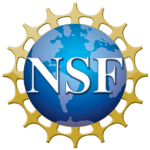
About Mcity 2.0
With NSF’s support, Mcity Director Dr. Henry Liu, Managing Director, Greg McGuire, and the Mcity engineering team enhanced the Mcity Test Facility by developing digital infrastructure to overlay the physical test facility and create a cloud-based, augmented-reality CAV testbed available to academic and industry researchers nationwide.
Mcity 2.0’s remote capabilities are now operational, and can be used with the physical test facility and Mcity research vehicles. 48 test days per year have been allocated for NSF projects. Mcity expects to accept about 10 new projects annually.